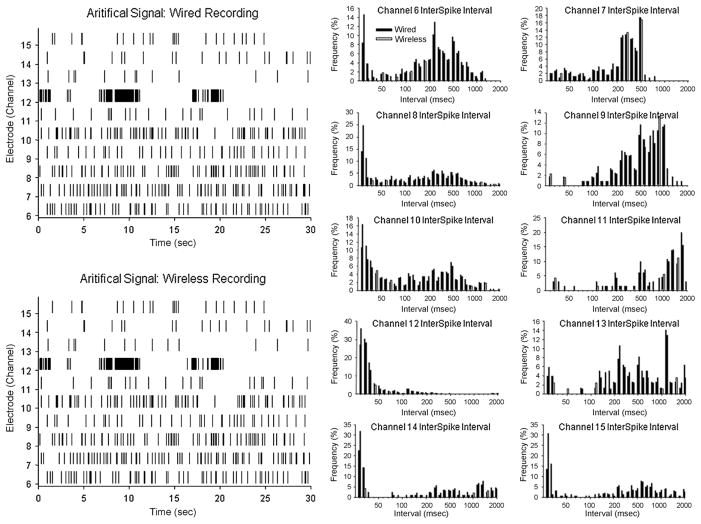Fig. 5.
Direct comparison of UBAT vs. direct wired recording of neural signals. The raw data consisted of a digitized multichannel neural signals previously recorded from the hippocampus of a rat, with a frequency range (DC to 10 kHz) that contained neuronal spike activity imposed on higher amplitude lower frequency slow potentials to mimic real online input from rat brain to both recording devices. The UBAT output was compared with output from a Plexon Instruments cable headstage and recording system with matched bandpass filter settings to the UBAT (250 Hz to 6.0 kHz). Left: the exact same temporal segments of rat brain digitized signal were fed into both systems (wired recording system on top, UBAT on the bottom) and the timestamps of discriminated spike events (indicated in the stripcharts) compared. Right: time interval histograms derived from the same input signal are compared for the UBAT wireless system (gray bars) and Plexon Inc. wired-cable recordings (black bars), for each channel. The close match of the distributions indicates the accuracy of UBAT recording and wireless transmission for the same neural spike information recorded directly through the wired recording system. The only discrepancy between the two systems was that very high frequency events which occurred <10 ms apart which were shown more consistently in the wired system because of a modifiable rejection algorithm programmed into the onboard UBAT PIC processor for recording typically lower frequency hippocampal neural events.

